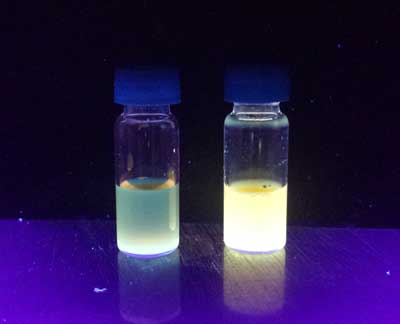| Posted: Dec 21, 2016 |
Nanoparticle tattoos mark the spot - for surgery - then disappear
(Nanowerk News) Tattoos aren’t just for body art. They can have medical applications, too. Doctors are using them on patients to mark an area for future treatment — particularly for non-melanoma skin cancer such as basal cell carcinoma — but the inks can cause problems.
|
|
Now scientists have developed a better solution. In the journal ACS Nano ("Cross-Linked Fluorescent Supramolecular Nanoparticles as Finite Tattoo Pigments with Controllable Intradermal Retention Times"), they report a new ink that glows only under certain light conditions and can disappear altogether after a period of time.
|
 |
| Scientists made an “ink” for marking surgery targets on the skin by combining a polymer (left) with fluorescence supramolecular nanoparticles (right). (Image: Jin-sil Choi/Hsian-Rong Tseng)
|
|
Patients diagnosed with skin cancer typically have to wait up to three months between a biopsy confirming their condition and treatment. Doctors can mark the spot for possible future treatment using carbon graphite, India ink or fluorescent dye.
|
|
But these pigments permanently color the skin, and can require laser or surgical removal after a patient has undergone surgery. They can also cause inflammation and discomfort at the site of the tattoo. Kai Chen, Gary S. Chuang, Hsian-Rong Tseng and colleagues wanted to develop a safer, more patient-friendly option.
|
|
The researchers created a time-limited pigment by cross-linking fluorescent supramolecular nanoparticles. Under ambient lighting, the nanoparticles are invisible, which would avoid unwanted markings in a patient’s skin. But the pigment glows under light shining at a wavelength of 465 nanometers, so doctors would be able to use a special light to see the dye.
|
|
Testing in mice showed that tattoos created with these nanoparticles didn’t cause inflammation and lasted for three months. This would be long enough to mark a spot from biopsy through treatment for a non-melanoma patient.
|

